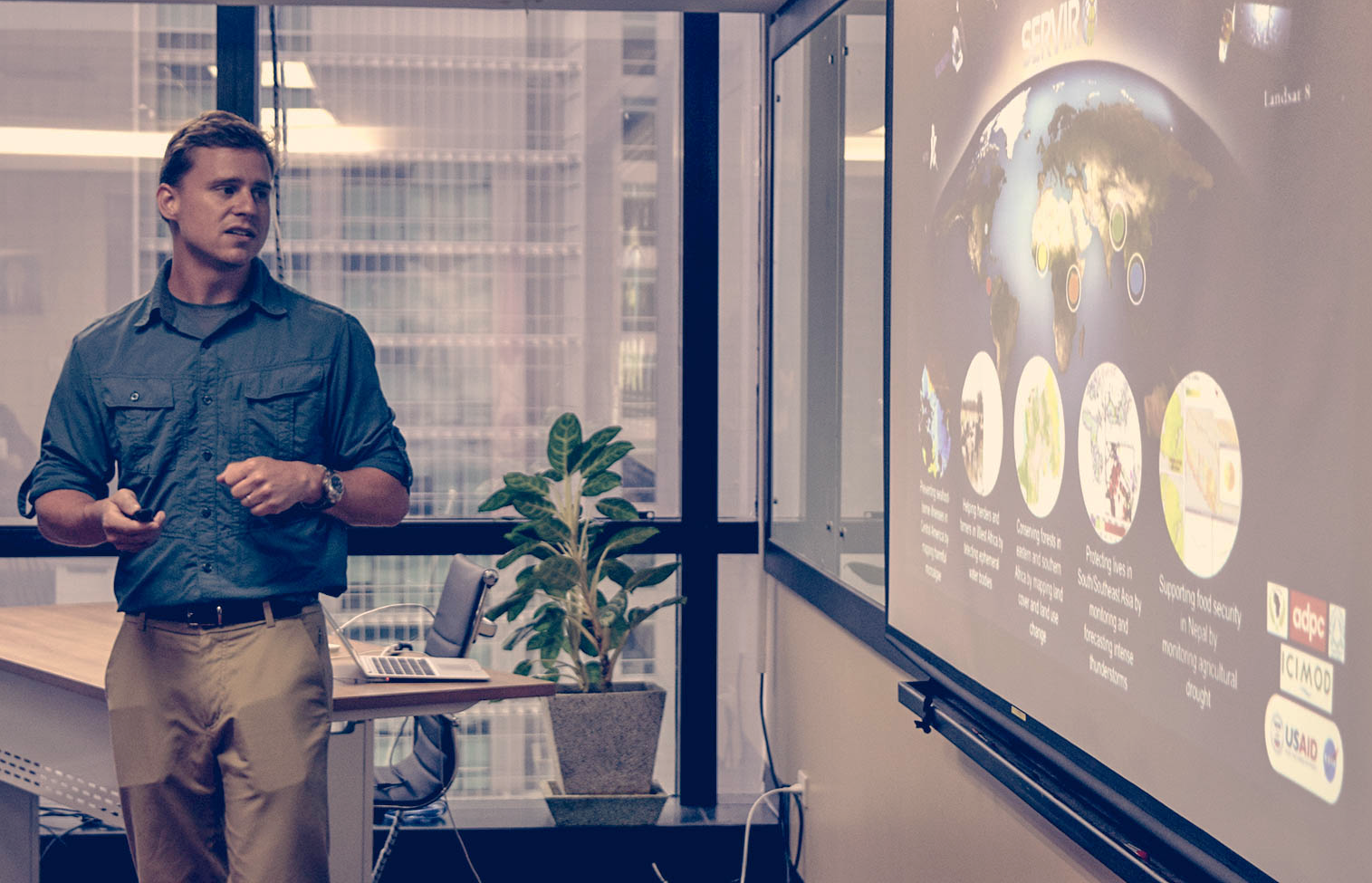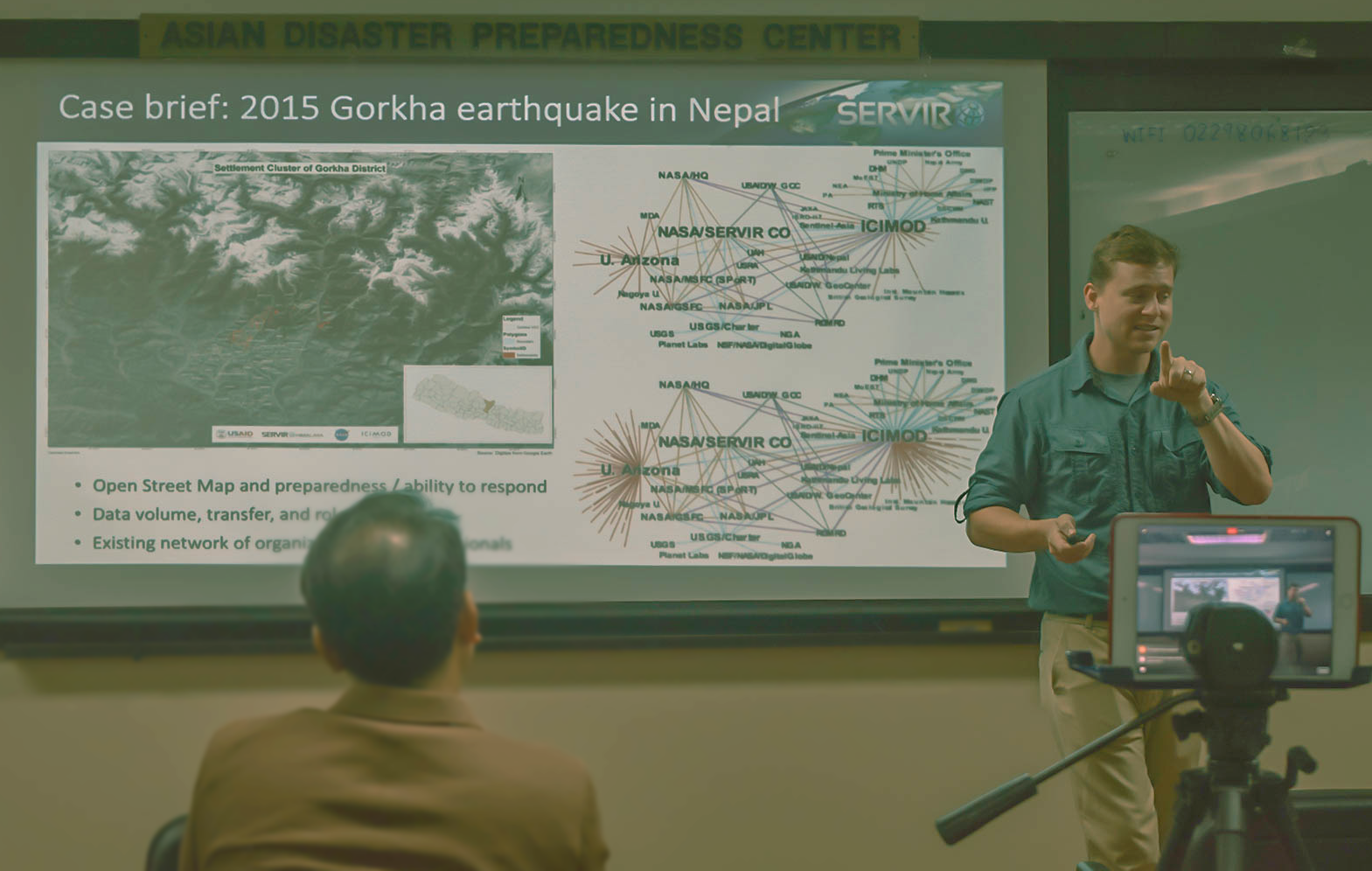Using space for disaster risk reduction

On May 12, 2017, Eric Anderson, SERVIR-Mekong Science Coordination Lead with National Aeronautics and Space Administration (NASA) / SERVIR held a session on ‘using space for disaster risk reduction’. With over 30 people in person and 700 people online, Eric shared his experience with NASA and working with SERVIR Hubs in supporting agencies in the use of publicly available satellite imagery for preparedness and response. Across the world, the use of satellite imagery plays a critical role in preparing for and responding to disasters.

The unique perspective of space allows government and agencies to see the big picture and helps inform decisions when allocating resources for disaster risk reduction. For example, in Kenya, the use of hydrologic models and satellite-derived topography data allowed the World Bank to identify high-risk areas along a river to repair dikes to reduce the risk of flood. In Nepal, after the earthquake, satellite imagery provided insight on affected communities in hard to reach areas that informed relief distribution efforts. Publicly available satellite imagery is a cost-effective way to give people the information they need to make better decisions with limited resources.

SERVIR-Mekong, which is funded by the United States Agency for International Development (USAID) in partnership with the NASA and implemented by the Asian Disaster Preparedness Center (ADPC), is bringing the power of publicly available space technology to inform better disaster risk reduction and environmental management in the region. As part of a global hub, SERVIR-Mekong draws on the experience, knowledge, and tools from experts around the world to provide geospatial services to governments and agencies in the region.



